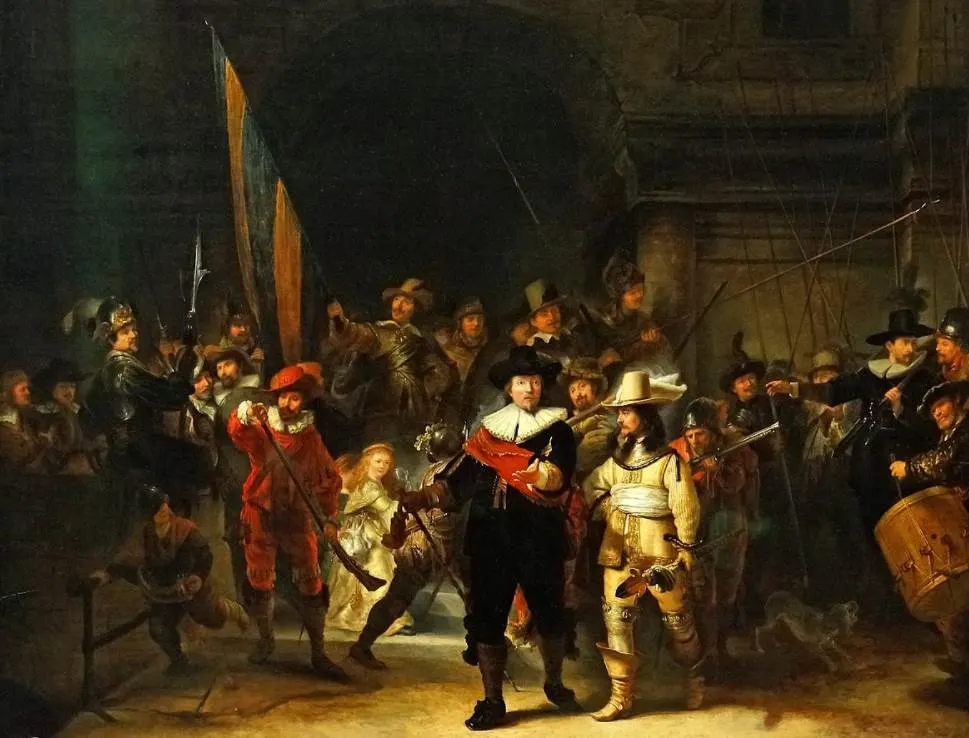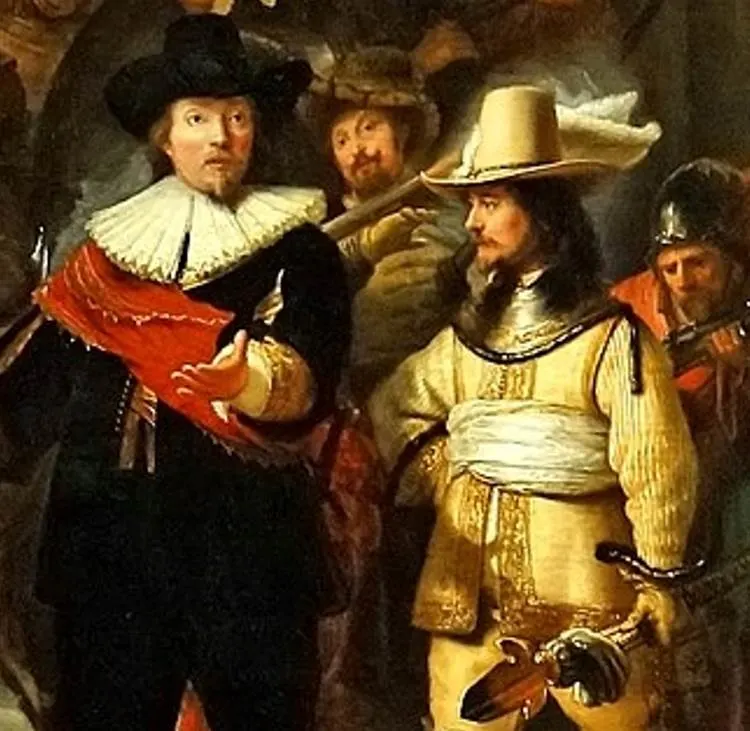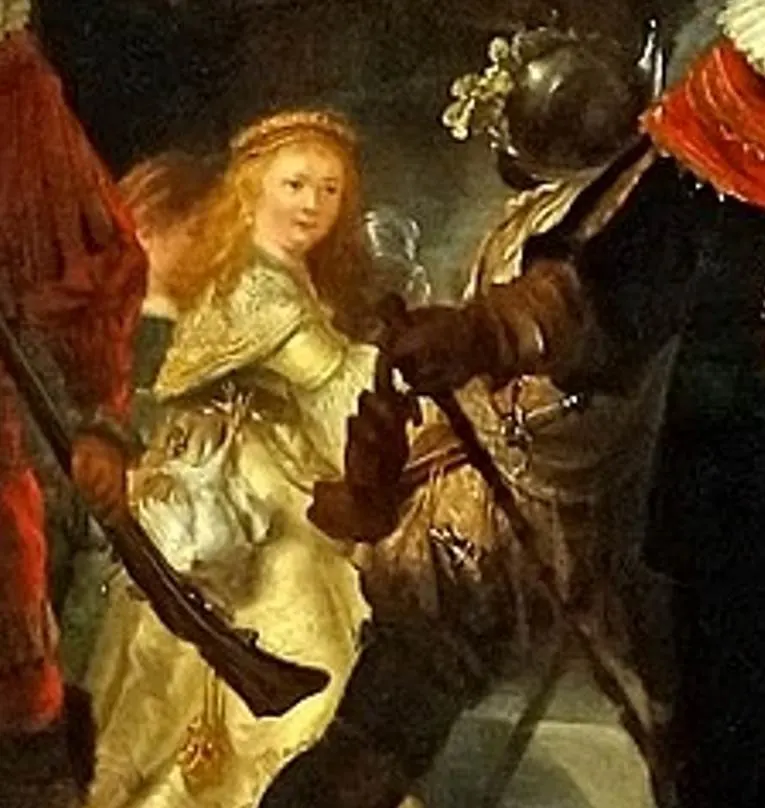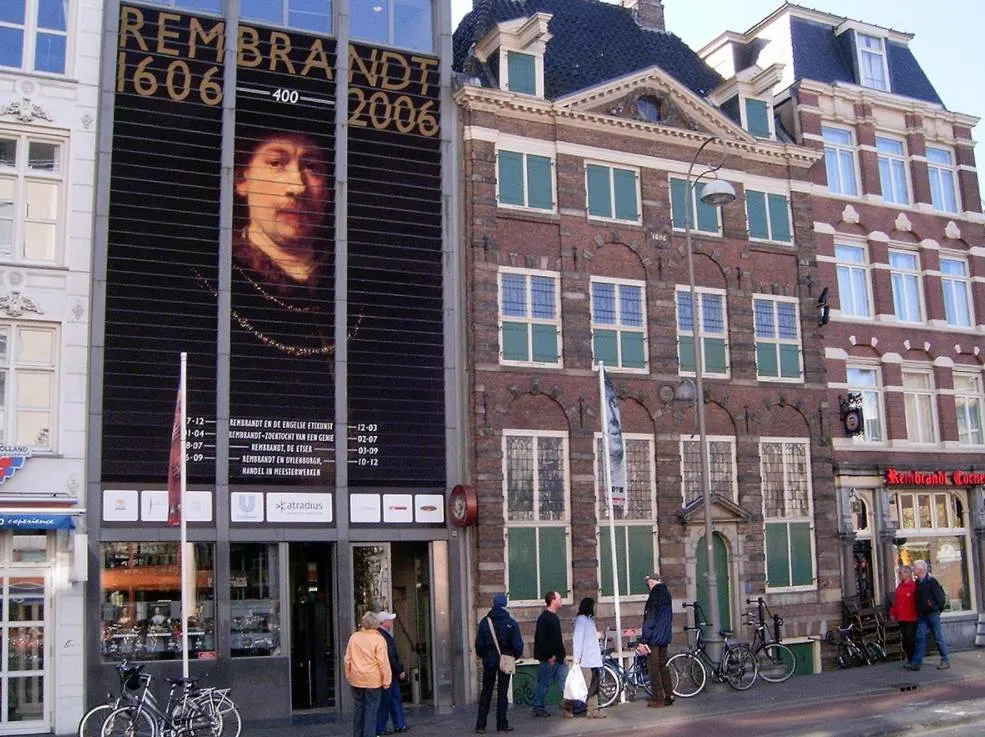The most renowned Dutch artist of the Dutch Golden Age produced one of the most fascinating paintings ever created. Rembrandt van Rijn (1606-1669) was an artist of the Baroque era who produced some of the most fascinating paintings in history.
The Magnum Opus of his amazing oeuvre is world-famous for several reasons. Let’s take a closer look at some of the most interesting facts about The Night Watch by Rembrandt, a world treasure of the Baroque era with a remarkable story.
1. It was completed when the artist was in his mid-thirties
Although Rembrandt van Rijn first opened a studio in his hometown of Leiden, he eventually moved to Amsterdam, a city that was quickly becoming the artistic center of the Dutch Republic.
His enormous talent didn’t go unnoticed and he didn’t have any trouble acquiring commissions. This allowed him to build his own house in Amsterdam, a place that is now the home of the Rembrandt House Museum.
He was commissioned to paint this magnificent work in 1639 and he completed it between 1640 and 1642. It remains unclear today where he compelled it because it is too big to have been done in his studio. He likely completed it elsewhere, possibly on location or in an adjacent building to his house.

2. It depicts the members of the civic militia of Amsterdam
The painting was commissioned to decorate the banquet hall of the so-called “Schutterij,” a military group consisting of volunteers that was established to keep the city safe.
It was intended to decorate the “Klovenierdoelen,” the meeting hall of the musketeers. This building also featured the shooting range of this group. The type of weapon they used was an “arquebus,” an early type of musket which they are holding in the painting.
This building was located on the corner of the Nieuwe Doelenstraat and Kloveniersburgwal canal in Amsterdam. It doesn’t exist anymore and the 19th-century Doelen Hotel was built on this spot.

3. The painting’s title doesn’t reflect what is depicted
The first thing you notice when admiring this masterpiece is that it looks pretty dark. Because it was coated with an extremely thick varnish, it was wrongfully identified as a scene that takes place at night since the 18th century.

That’s the main reason why it was called the “Nachtwacht” in Dutch which translates to “The Nightwatch.” The scene depicts a moment that the militia group gets ready to patrol in the middle of the day.

4. The two main figures of the group have been positively identified
The painting is also sometimes referred to as the “Militia Company of District II under the Command of Captain Frans Banninck Cocq” or “The Shooting Company of Frans Banning Cocq and Willem van Ruytenburch,” and this is a reference to the two main figures.
Captain Frans Banninck Cocq (1605-1655) was the leader of the group and can be seen dressed in black. He was the one who officially commissioned the painting as well along with 17 other members. He was a very influential man in Amsterdam and was even appointed as mayor of the city in 1651.
Willem van Ruytenburch (1600-1652) was a Dutch gentleman and the son of a rich spice trader. He is depicted wearing yellow clothes and was the first lieutenant of Banninck Cock in the group.

5. The woman in the background carries the emblems of the group
A total of 34 figures appear in the painting and Rembrandt included several references to the identity of the group of civil guards. This makes the woman just behind the two leading men one of the most important figures in the painting.
Some of these things are:
- The claws of the chicken on her belt are references to the “Clauwwenier” or “Arquebusiers.”
- There’s a pistol behind the chicken which represents clover and she holds the group’s goblet.
- The man in front of the woman wears a helmet featuring an oak leaf, another symbol of the Arquebusiers.
The artist used tenebrism, use of light and shadow to highlight certain elements, to draw the attention of the viewer to the two main figures and the woman behind them. This use of chiaroscuro was influenced by the paintings of Caravaggio.

6. Rembrandt earned a lot of money from completing this work
All the main figures in the painting chipped in some guilders to be included in Rembrandt’s masterpiece. This was pretty common at the time, a period at the height of the Dutch Golden Age in which at least 7 similar paintings were completed by various renowned Dutch artists.
Rembrandt was paid 1,600 guilders to complete this amazing painting, a huge sum at the time. To give some reference to this number, the mortgage on his house cost him 13,000 guilders.
Unfortunately, he didn’t spend his money wisely and the large payments he received didn’t always go to repaying his house. He bought a lot of art as well and lost a lot of money, resulting in his bankruptcy in 1656 and continuous financial trouble during the final decades of his life.

7. It was painted at a monumental scale
Apart from the dark shade of the painting, you’ll also instantly notice that this was indeed a work painted at a monumental scale. All of the figures were painted approximately life-sized, resulting in a huge work of art.
The oil on canvas painting has dimensions of 363 × 437 centimeters (142.9 × 172 inches) and covers an entire wall.

8. The painting was actually bigger upon completion in 1642
One of the most remarkable facts about The Night Watch by Rembrand is that it was bigger when it competed in the year 1642 than it is today. That’s because it was moved from the “Groote Zaal” (Great Hall) of the Kloveniersdoelen in Amsterdam to the Town Hall in 1715.
Because they wanted to fit the huge painting in between two columns inside the building it was trimmed on all 4 sides. This peculiar practice resulted in the loss of 3 characters on the left side of the painting and the loss of the top of the arch.
Although the original portions have been lost, we know exactly how these looked like because of a copy made by Gerrit Lundens in the 17th century. This copy is now part of the collection of the National Gallery in London.

9. The Night Watch is the main attraction at the Dutch National Museum
The Night Watch is the most famous painting in the collection of the Amsterdam Museum and is considered to be one of the country’s ultimate treasures. It’s not located here though as this museum is reserved for specific items related to the history of Amsterdam.
You can admire the masterpiece of Rembrandt at the Rijksmuseum in Amsterdam, the national museum of the Netherlands located at Museum Square. Here you can also find the Van Gigh Museum and the Stedelijk Museum Amsterdam to name just a few popular museums in this area.
It has been on display at the Rijksmuseum since 1885 after moving here from the Trippenhuis in Amsterdam

10. A cool derivative work decorates the Rembrandt Square in Amsterdam
The 17th-century copy isn’t the only replica of the painting ever created. A full-scale replica can be found at the Canajoharie Library & Art Gallery in Canajoharie, New York.
It has also been featured in countless forms of media, including novels, films, and even musical works. One of the most fascinating derivative works of The Night Watch can be found on the Rembrandtplein, a public space in Amsterdam that was named in honor of the artist.
Russian artist Alexander Taratynov created multiple bronze sculptures that represent the figures depicted in the painting. This creates a 3D effect of the painting right below the artist’s statue, quite amazing!

